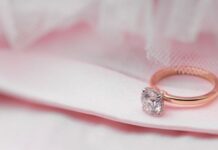Cotton and silk are excellent choices for baby eczema clothing since they allow the skin to breathe, keeping your eczema kid cool and comfortable. Silk also has natural antibacterial qualities that decrease the chance of infection.
What can you do when it comes to clothing your itchy youngster? You’ll be surprised at the difference a textile selection makes to a kid’s comfort. Here’s our list of eczema friendly fabrics to search for while dressing an eczema baby. Our scratch mitts and baby pyjamas are made from the greatest materials for eczema babies: cotton and silk.
Cotton
Cotton is a great choice for individuals with eczema since it’s soft and lightweight. The loose fabric doesn’t irritate the skin and allows it to breathe freely. If your kid is sweaty, though, the material may absorb moisture and cause an abrasive movement that can irritate the skin. Silk is currently a superior option to using artificial materials or wool, but it’s rapidly becoming worse.
Choose textiles that are as close to 100% cotton as possible, and avoid textiles marketed as “cotton-rich,” which usually contain a lot of polyesters.
Silk
Silk is also beneficial for eczema in children, as it is soft and attractive while being highly beneficial to those suffering from the condition. Silk is naturally anti-microbial, reducing the risk of infections on eczema-prone skin.
In a study published in the British Journal of Dermatology, called ‘Clinical effectiveness of a silk fabric in the treatment of atopic dermatitis,’ 46 children were assigned to two groups. One group was given special clothing, while the other control group wore cotton garments.
Only a moisturizer was used. Within one week, the children wearing silk demonstrated a significant reduction in eczema, whereas the cotton group showed no change. The use of unique silk apparel in the treatment of AD in youngsters is suggested by the study.
Wool
Even non-eczema sufferers may become irritated by woolly jumpers, so wool is generally a no-no for eczema sufferers. The discomfort is caused by the ends of some wool fibres rubbing against the skin, causing nerve receptors in the skin to be activated.
Certain materials, such as wool and nylon, can irritate your skin by causing it to scratch. This causes the release of histamines in your skin, inflammation, and more itching. Some woollen clothing may also include traces of natural lanolin, which is a typical eczema trigger. Research published in 2012 investigated the effects of superfine merino wool on children aged four weeks to three years old with moderate to severe eczema and found that it was beneficial.
The small study, which was conducted with 39 patients for 12 weeks, found that eczema symptoms improved in those who were wearing superfine merino wool compared to the control group, who wore cotton. According to the research, ‘superfine merino wool may help manage childhood atopic dermatitis.’
Fleece
Our eczema baby was completely fine with light fleece fabrics and a variety of our customers have reported similar experiences, according to the conventional belief. The greatest danger with fleece textiles is that they will be too warm, which can make eczema-prone skin itchier. The fleece, a fibre that grows in abundance in the northern climates of Canada and the United States, is one of our favourite choices for parents seeking to keep their kids comfortably cool all summer. The bulkiness of fleece, which may cause uncomfortable bunching around the elbows, shoulders, and knees; as well as the fleece’s fuzz catching on dry skin; are some of the fleece’s drawbacks. Thin fleeces are worth considering for your eczema kid if you’re looking for a lightweight yet warm top layer on spring or fall excursions.
Micro-fibre clothing
Sensitive skin-friendly textiles have been produced. Microfiber fabrics are more absorbent than cotton and may be more beneficial for some eczema patients. Because microfiber fabrics are less irritating by nature and are typically extremely smooth, they can cause less irritation compared to cotton clothing for some eczema babies. The cost of specialist eczema wear constructed of these materials is the most significant disadvantage, but if your child’s eczema is severe, micro-fibre base layers may make a significant difference.
Fabrics to avoid
Nylon, rayon, and polyester are examples of synthetic materials that can be warmer and cause itching, prolonging the effects of eczema.
Eczema aids
Why not check out ScratchSleeves online and learn more about products available to help prevent eczema in babies and small children.
Water Vapour Permeability Tester, also called Water Vapor Transmission Rate Tester (WVTR Tester) is to determine the water vapor permeability of various textile and garment fabrics, coating fabric, composite, sportswear, and industrial fabrics. This tester complies with ASTM E96, GB/T 12704, JIS L1099, etc.




















